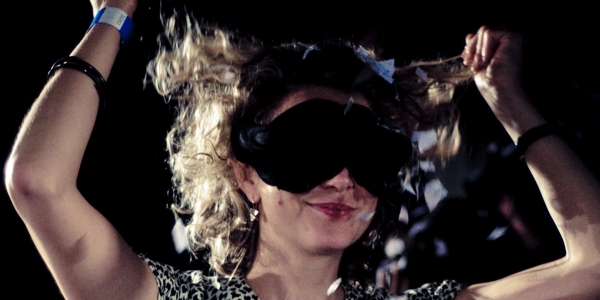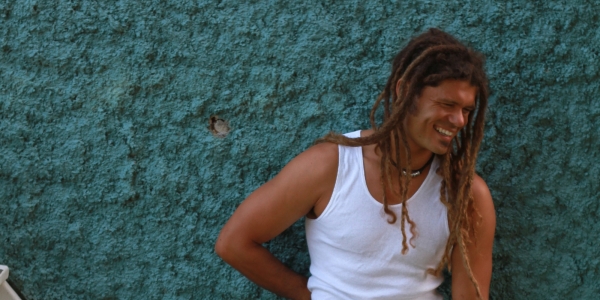Live cinema is not cinema in the same way that Thrashing Without Looking is not theatre. The former is not something to be sat down and watched on the screen and the latter is not a play to be viewed on a stage from the stalls. But the two go together quite nicely. Experiment work, Thrashing Without Looking uses live cinema to engage the audience in the performance itself. In this sense it is an experience.
The premise is this: 12 audience members or better put, participants, wear video goggles in which they see elements of their surroundings through a live feed filmed by a camera wheeled around the stage. There’s a guided storyline that the participants follow but also help create. Lara Thoms, one of the five produces of the 30 minute collaboration to be presented at the Arts House this August explains further. “Basically we’re creating live cinema,” she says. “So we’re inviting part of the audience to be in video goggles where they watch themselves being filmed whilst other members of the audience create a series of scenes and images around them in real time.”
Thoms emphasizes the lack of rigidity in the work’s structure. Although scripted, flexibility is needed to make the work dynamic and reflect the differences between the participants on each night. “There’s five of us who are guiding the whole show and it’s got a lot of specific images but there’s also room for it to shift depending on what audiences are there on the night.”
Being an experiment, it would certainly be an ineffective one if the results were identical each time. Thoms notes that if the show was repeated unvaried, it would “lose its edge.” We like to keep it risky,” she laughs. “It’s not all about us directing it or making them (participants) do things. There is that sense of agency and choice in it for some audience members.”
The producers have been staging a showing of Thrashing in Sydney where they were moulding and tweaking the performance for its Melbourne run. Thoms says that it’s 80% there, but it can never truly be 100% without knowing the types of participants that will be involved. The performance itself explores the role of agency so it’s important for participants to bring their individual differences to the work, shifting the nuances with their own perceptions and ideas.
After its Sydney run, Thoms was interested in the varying feelings the participants experienced. “A lot of people feel like the work is about screen culture and disembodied experiences when it comes to how mediated our society has become in terms of the internet and television, because you’re seeing the live world through these screens. Other people have felt extremely alone even though they’re being surrounded by people and lots of things happening. You’re in your own little world and there’s a kind of emptiness from that.”
Thoms is a contemporary artist who has been working with video goggles for many years. This device is significant not only because people react to their “blindfolded” states differently, but also because it involves the other senses. “Because you’re blindfolded by screens, all your other senses are heightened and out or your control. It’s playing with that and elements of touch and elements of smell. We can have quite an intimate experience for everyone and look at what’s possible in a really live environment.”
The goggles also encourage the element of surprise that Thoms is interested in playing with. “There’s an opening scene which is almost like a cocktail party, where people get to know each other that goes into a nightclub environment really quickly. So it’s very familiar images, but because the space is empty when you enter it, you don’t expect them to be happening around you so quickly.”
As things get wheeled on and off the stage, the camera zooms in and out on certain images, which some participants have found quite disorienting, but which aids in the surprise element. “As the goggles zoom into some detail, things happen outside that frame and then the wide shot exposes a shift in the environment or a shift in the performance that you might not be aware is happening. So it’s very controlled through this camera frame which is disorienting, because you might feel that something else is going on around you but what you’re seeing is a close up of someone’s hand which you’re not sure is your hand.”
Although participation is required for the show to function, Thoms says that if people are not comfortable, they are welcome to simply watch the projected images from the edges. “It’s a very mild form of participation. It’s nothing too scary.”







